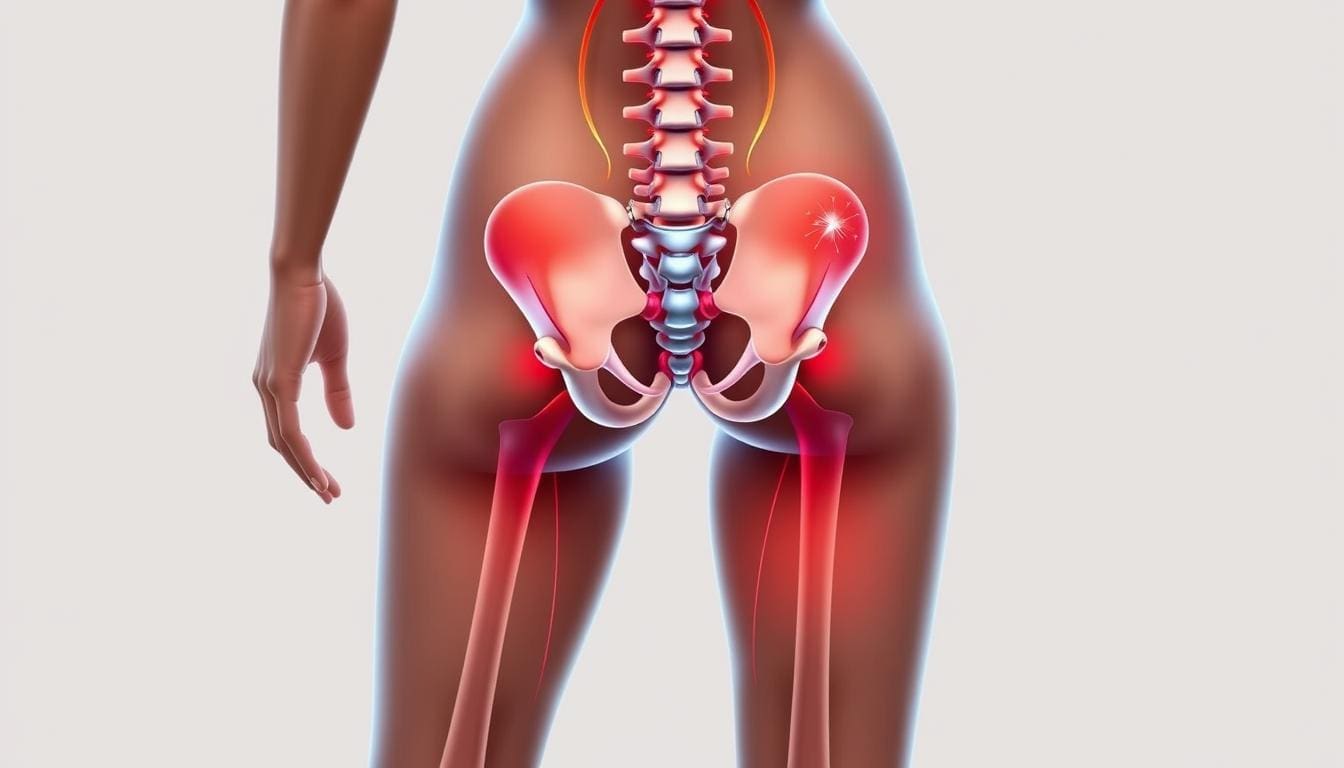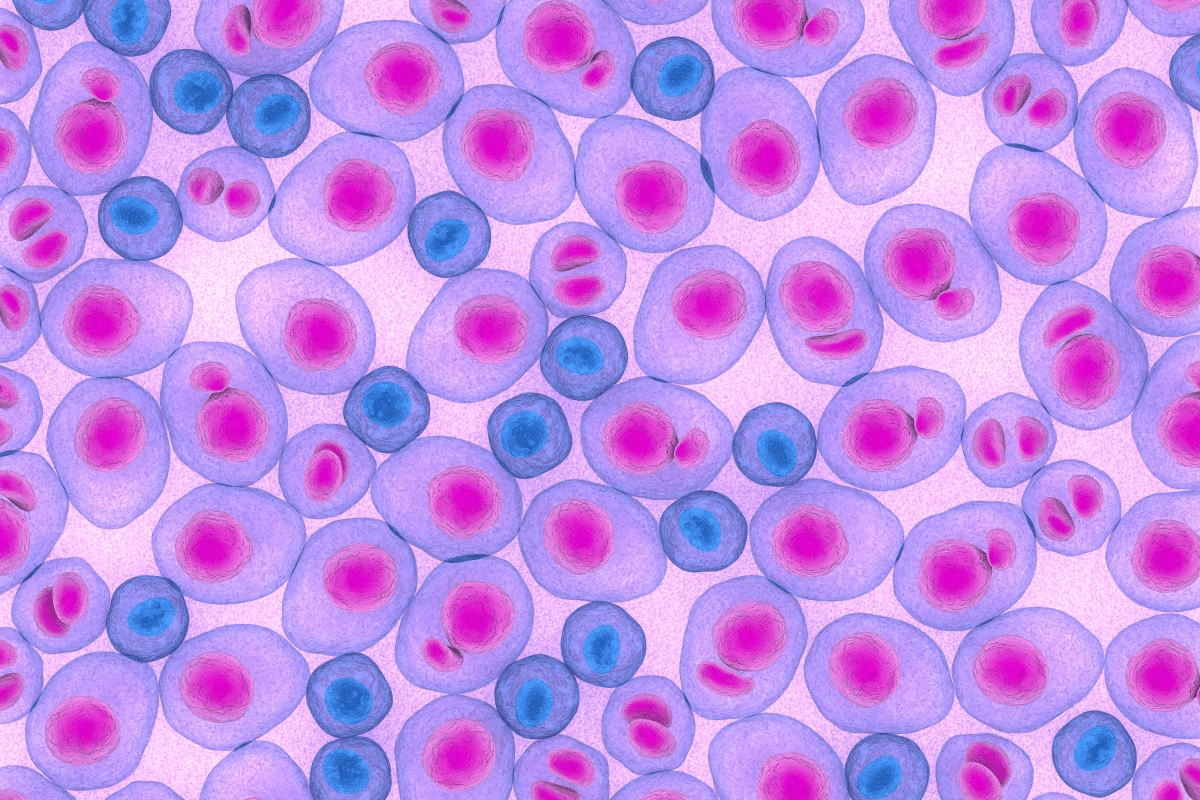Last Updated on November 26, 2025 by Bilal Hasdemir

At Liv Hospital, we know how tough neck and back pain can be. For many, facet joint injections are a ray of hope. This simple procedure puts a mix of anti-inflammatory and local anesthetic right into the facet joint or nearby tissue. Key facts about cervical facet joint injections for neck pain relief and procedure tips.
We use cervical facet joint injections to find and fix the pain’s source. This helps those with long-term pain feel better. By focusing on the pain spot, we help our patients move easier and live better.
Key Takeaways
- Facet joint injections are a minimally invasive procedure for diagnosing and treating neck and back pain.
- The procedure involves injecting anti-inflammatory medication and a local anesthetic into the facet joint.
- It provides targeted relief by directly addressing the source of pain.
- Liv Hospital delivers patient-centered care grounded in the latest international protocols.
- Our approach combines medical expertise with empathy and understanding.
- Facet joint injections can significantly improve the quality of life for patients with chronic pain.
Understanding Facet Joint Pain and Its Causes

Facet joints are key to our spine’s health. When they don’t work right, it can hurt a lot. Knowing how these joints work and why they might hurt is important.
Anatomy of Spinal Facet Joints
Facet joints, or zygapophysial joints, are tiny bones at the back of each vertebra. They help keep the spine stable and moving smoothly. These joints have a special lining that helps them move without pain.
Each vertebra has two facet joints, one on each side. They work with the discs between the vertebrae to help us move. This setup is vital for our spine’s flexibility and strength.
Common Causes of Facet Joint Dysfunction
Facet joint problems can come from wear and tear, arthritis, or injuries. As we get older, these joints can start to hurt and stiffen. Arthritis and injuries can also cause pain.
Studies show that facet joint issues often lead to chronic pain. Knowing why it happens helps doctors find better ways to treat it.
Symptoms That May Indicate Facet Joint Problems
Pain and stiffness in the neck or back are common signs. Neck pain might spread to the shoulder or head. Back pain can go to the buttocks or thighs.
Other signs include feeling stiff, mostly after sitting or lying down for a while. Sometimes, the pain feels like it’s coming from somewhere else.
What Are Facet Injections? Key Fact #1: Definition and Purpose

Facet injections are a key part of spinal pain management. They involve putting medication into or around the facet joints in the spine. This helps manage pain in the spine.
These injections have two main goals. They help find the source of pain and give relief to those with spinal discomfort.
Basic Mechanism of Action
Facet injections work by putting medication into or around the facet joint. The mix usually includes a local anesthetic and a corticosteroid. The anesthetic gives quick pain relief to check if the joint is the pain source. The corticosteroid cuts down inflammation, giving longer pain relief.
“Facet injections help us both find and treat pain from the facet joints,” says a top pain management expert. “By injecting medication directly into the joint or nearby tissue, we can greatly reduce inflammation and ease pain.”
Diagnostic vs. Therapeutic Applications
Facet injections serve both diagnostic and therapeutic purposes. They help figure out if the facet joint is causing pain. They also offer pain relief by reducing inflammation in the joint.
- Diagnostic facet injections help identify the pain source.
- Therapeutic facet injections provide relief from pain.
Components of Facet Joint Medication
The medication in facet injections has two main parts: a local anesthetic and a corticosteroid. The anesthetic gives quick pain relief. The corticosteroid helps reduce inflammation over time.
We mix these medications for both immediate and long-term pain relief. The exact mix depends on the patient’s condition and the doctor’s judgment.
Key Fact #2: Types of Facet Joint Shots
Knowing the different facet joint injections is key for managing pain. These injections target specific areas and use various techniques. Each has its own use and benefits.
Intra-articular Facet Injections
Intra-articular facet injections put medicine right into the joint. They aim to cut down inflammation and ease pain. The procedure is done under imaging to place the needle correctly.
A study in the Journal of Pain Research showed these injections help a lot. It found that precise needle placement and using corticosteroids are key for success.
Paravertebral Facet Joint Injections
Paravertebral injections target the area around the joint. They block pain signals to the brain. They use local anesthetics and/or corticosteroids in the paravertebral space.
| Type of Injection | Target Area | Primary Use |
| Intra-articular | Inside the facet joint | Reducing inflammation and pain within the joint |
| Paravertebral | Surrounding the facet joint | Blocking pain signals from the joint |
Medial Branch Blocks
Medial branch blocks inject medicine onto the medial branches of the dorsal rami. This is mainly for testing if the facet joint is causing pain.
“Medial branch blocks are a valuable diagnostic tool in assessing facet joint pain. By temporarily blocking the pain signals, healthcare providers can determine if the facet joint is the primary pain generator.” – Interventional Pain Specialist
Each facet joint injection has its own use and benefits. Knowing these differences helps healthcare providers tailor treatments. This improves outcomes and makes patients happier.
The Cervical Facet Joint Injection Procedure: Key Fact #3
The cervical facet joint injection is a precise method to treat neck pain. It involves several steps to ensure it works well and is safe.
Pre-Procedure Preparation
Before the procedure, patients get checked to see if it’s right for them. Pre-procedure preparation includes looking at their medical history and current meds. They might be told to stop blood-thinning meds to avoid bleeding.
On the day, patients lie on their stomach on an X-ray table. The area is cleaned and numbed with a local anesthetic. This makes the procedure as comfortable as it can be.
Image Guidance Techniques
Image guidance techniques are key for accurate injections. Fluoroscopy, a type of X-ray, guides the needle. This lets the practitioner see the needle’s path in real-time, making the procedure safer and more effective.
Facet Joint Injection Needle Placement
The facet joint injection needle is placed with image guidance. A contrast dye might be used to check the needle’s position. Then, a mix of local anesthetic and corticosteroid is injected into the joint.
Duration and Patient Experience
The whole cervical facet joint injection procedure takes 15 to 30 minutes. The actual injection is quick. Patients might feel a brief pinch, but this is usually managed with the local anesthetic.
After, patients are watched for a bit before going home. Most can go back to normal activities right away. Some might be told to avoid hard activities for a day or two.
Key Fact #4: Regional Variations in Facet Joint Injections
Facet joint injections are done in different parts of the spine. Each part, like the neck, lower back, and mid-back, needs its own special approach. This is because each area has its own shape and function.
Facet Injection Neck (Cervical) Procedures
Cervical facet joint injections help with neck pain. They need to be very precise because of the neck’s complex structure.
Using tools like fluoroscopy or CT scans is key for these injections. It makes sure the medicine goes right to the pain spot, giving relief.
Lumbar Facet Joint Injections for Lower Back
Lumbar facet joint injections treat lower back pain. They mix a local anesthetic with a corticosteroid to help.
Key considerations for lumbar facet injections include:
- Accurate diagnosis of facet joint pain
- Proper needle placement using image guidance
- Selection of appropriate medication
Thoracic Facet Injections
Thoracic facet injections are for mid-back pain. They use a similar method as other areas but adjust for the thoracic spine’s unique shape.
The choice of imaging guidance is very important in the thoracic region. This is because of the nearby vital organs. Fluoroscopy or CT guidance ensures safe and accurate needle placement.
Key Fact #5: Benefits and Effectiveness of Facet Shots
Facet shots are a helpful treatment for facet joint pain. They offer relief to those who suffer from it. We’ll look at how well these injections work, focusing on how long pain relief lasts and success rates for different conditions.
Pain Relief Duration
The time pain relief lasts after facet shots varies. Some people feel better for months, while others might not feel relief for as long. The condition being treated, how accurate the injection is, and the patient’s health all play a role.
Research shows facet joint injections can help for different lengths of time. For example, a study found that lumbar facet injections can relieve pain for 6 to 12 months. But, it’s important to remember that everyone’s experience is different. Some might need more than one injection to keep feeling better.
Functional Improvement Outcomes
Facet shots can also improve how well you can move and do daily tasks. They help reduce pain and inflammation in the facet joints. This can help you move more easily and improve your overall quality of life.
Studies show facet joint injections can lead to better function. This is seen in how well patients can do things, as measured by special tests. This is very helpful for people with facet joint syndrome, helping them break the cycle of pain and limited movement.
Success Rates by Condition
The success of facet shots can depend on the condition being treated. For example, lumbar facet joint pain might have different success rates than cervical or thoracic pain. Knowing these differences helps manage patient expectations and improve treatment results.
Research shows facet joint injections work for different people in different ways. Success rates range from 50% to over 90%. The best results often come from treating those with clear facet joint problems and who haven’t gotten better with other treatments. By choosing the right patients and tailoring treatment, doctors can increase the chances of success.
Key Fact #6: Understanding Risks and Side Effects
It’s important to know the risks and side effects of facet joint injections. These injections are usually safe, but there are some things to watch out for.
Common Side Effects
Most people do well after facet joint injections. But, some might feel:
- Temporary pain or discomfort at the injection site
- Mild swelling or bruising
- Headaches
- Dizziness or lightheadedness
- Facial flushing
These side effects are usually mild and go away in a few days. Following your doctor’s post-procedure instructions can help avoid problems.
Rare Complications
Even though rare, serious complications can happen. These include:
- Infection at the injection site
- Nerve damage
- Allergic reactions to the medications used
- Bleeding or hematoma
- Spinal cord injury (extremely rare)
Talking to your doctor about your risk factors is key, if you have allergies, bleeding disorders, or other health issues.
Risk Factors to Consider
Some factors can make complications more likely. These include:
| Risk Factor | Potential Impact |
| Bleeding disorders | Increased risk of bleeding or hematoma |
| Diabetes | Potential for elevated blood sugar levels due to corticosteroids |
| Weakened immune system | Higher risk of infection |
Knowing about these risks and side effects helps you make better choices.
We suggest talking to your doctor about your specific risks and any worries before getting a facet joint injection.
Recovery and Aftercare Following Facet Joint Interventions
Getting better after facet joint injections depends on how well you follow the recovery steps. We know that getting this treatment is a big step in fighting pain. We’re here to help you through the healing process.
Immediate Post-Procedure Care
Right after the injection, rest for a bit to let the medicine work. Make sure someone is with you when you go home because you might feel sleepy or numb from the local anesthetic.
Keep an eye on your pain levels and any changes. Writing down your pain in a diary can help you see how you’re doing and spot any patterns.
Activity Restrictions
For the best results, stay away from hard work for at least 24 hours after. This means no heavy lifting, bending, or exercise. But you can do gentle stretching and normal daily tasks soon after. Just remember to listen to your body and don’t do too much too soon.
Don’t drive or use heavy machines until you’re sure you’re okay from the procedure.
When to Contact Your Doctor
Facet joint injections are usually safe, but there are times when you should call your doctor. If your pain gets worse, you see signs of infection (like redness, swelling, or fever), or feel anything strange, get help right away.
Also, make sure to keep your follow-up appointments with your doctor. They can check if the treatment is working and plan what to do next.
By following these steps and paying attention to how your body feels, you can get the most out of your facet joint injection. This can help you live a more comfortable life with less pain.
Key Fact #7: Who Is a Good Candidate for Facet Joint Injections?
To find out if someone is a good candidate for facet joint injections, we look at their medical history and past treatments. We check several things to see if this procedure is right for them.
Medical Conditions That Benefit
Facet joint injections are often suggested for people with certain health issues. These include facet joint arthritis or spinal degeneration. These problems can make a person’s life very painful.
The table below shows some medical conditions that might get better with facet joint injections:
| Medical Condition | Description | Benefit from Facet Joint Injections |
| Facet Joint Arthritis | Inflammation of the facet joints | Yes |
| Spinal Degeneration | Wear and tear on spinal joints | Yes |
| Chronic Back Pain | Long-term pain in the back region | Possible |
Contraindications
Even though facet joint injections can help, there are some things that might stop you from getting them. These include active infections, bleeding disorders, and allergies to the medicines used in the injections.
Contraindications to Facet Joint Injections:
- Active infections
- Bleeding disorders
- Allergies to injection medications
- Uncontrolled diabetes
Pre-Procedure Evaluation Process
Before facet joint injections, patients go through a detailed check-up. This includes looking at their medical history, doing a physical exam, and sometimes, imaging tests like X-rays or MRI scans.
We also look at the patient’s current symptoms and what treatments they’ve tried before. This helps us figure out if facet joint injections are the best choice for them. By carefully checking these things, we can find the right candidates for facet joint injections and help them find relief from pain.
Conclusion: Making Informed Decisions About Facet Joint Treatments
It’s key to know the good and bad of facet joint injections before choosing a treatment. Cervical facet joints often cause chronic neck pain in many people. From 2000 to 2018, more people turned to cervical medial branch radiofrequency ablation (RFA) for relief.
Talking to a healthcare expert helps patients pick the right treatment. For more on facet joint pain, check out studies on the National Center for Biotechnology Information.
Getting personalized medical advice is vital when choosing facet joint treatments. With the right info and expert guidance, patients can make choices that fit their needs best.
FAQ
What is a facet joint injection?
A facet joint injection is a small procedure to help with neck pain. It involves putting medicine into the facet joint to lessen inflammation and pain.
What are the different types of facet joint injections?
There are several facet joint injections, like intra-articular facet injections and paravertebral facet joint injections. Each has its own purpose and method.
What is the purpose of a cervical facet joint injection?
A cervical facet joint injection aims to treat neck pain. It targets pain from the facet joints in the neck.
How is a facet joint injection performed?
To do a facet joint injection, doctors use tools like fluoroscopy or ultrasound. They inject medicine into the joint to ease pain and inflammation.
What are the benefits of facet joint injections?
Facet joint injections can offer pain relief and improve function. They also help reduce inflammation and pinpoint pain sources.
What are the potentials risks and side effects of facet joint injections?
Side effects of facet joint injections include temporary pain and swelling. Rarely, there can be infection, nerve damage, or allergic reactions.
How long does pain relief from facet joint injections last?
The pain relief from facet joint injections varies. Some people feel better for months, while others may need more injections.
Who is a good candidate for facet joint injections?
Those with facet joint dysfunction or arthritis might benefit from facet joint injections. A doctor will decide if it’s right for you.
What is the recovery process like after a facet joint injection?
After the procedure, rest and avoid hard activities. You’ll get instructions on what to do and when to see your doctor.
Can facet joint injections be used to treat lumbar facet joint pain?
Yes, facet joint injections can help with lumbar facet joint pain. The process is similar to cervical injections but for the lower back.
Are facet joint injections a permanent solution for pain relief?
Facet joint injections are not a permanent fix. They offer temporary relief, and you might need more injections. Other treatments like physical therapy are also suggested.
Reference
- Centers for Medicare & Medicaid Services. (2025). Facet Joint Interventions for Pain Management (L38803) https://www.cms.gov/medicare-coverage-database/view/lcd.aspx?LCDId=38803






